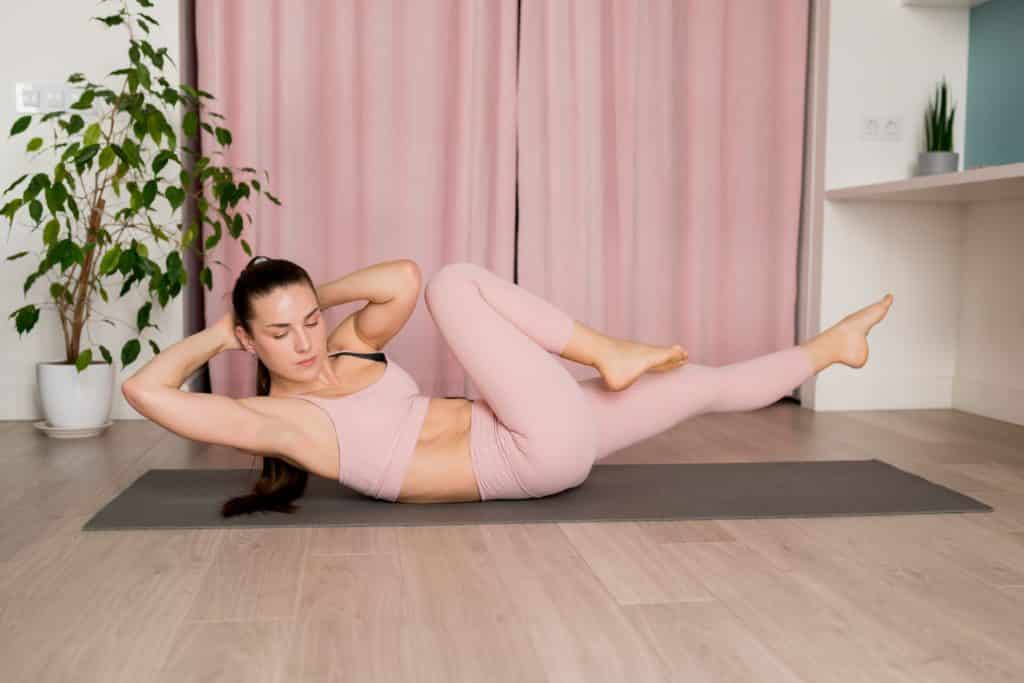10 Ab Workout Tips You Need to Learn

Ab workouts are essential exercises for building strong and functional core muscles. Everybody should exercise their core muscles because they help facilitate everyday movements and activities. Ab workouts also help with posture, lower back pain, and toning abs.
Knowing how to perform ab workouts correctly will help you achieve your fitness goals faster. In our books, the best tip is to perform ab workout routines correctly and consistently, and no, that doesn’t translate to doing a hundred crunches each day; it merely calls for smarter workout routines.
Keep reading for all the helpful tips you can use to get the best from your ab workout routine.
Table of Contents
1. Do Bodyweight Exercises
Machines and exercise equipment are great, but do you need them for your ab workouts? Nope! There’s nothing wrong with using them, but if you don’t have access to those tools at home, use what you have – your body weight.
Bodyweight exercises are just as effective if you’re committed. Several bodyweight ab exercises will help tone your abs and build your core. They include push-ups, Russian twists, crunches, and planks.
2. Explore Exercise Variations
Variety is good; try it!
Performing the same crunches exercise every time might get boring and make you demotivated, so be open to trying other variations. Your brain will recognize the change as a challenge and become extra motivated to get it done.
For example, if you choose the plank exercise, don’t stop at the regular plank; try other variations like knee plank, side plank on the forearm, and walking plank.
3. Perform Ab Workouts Correctly
If you perform ab workouts incorrectly, it may take longer before seeing any results. Worst still, you could injure yourself while at it and not hit the mark.
It is best to understand how to do ab exercises (or any exercise) before getting started. For the regular crunches, ensure you hold for a few seconds before lowering your body back to the ground. And for planks, don’t push your butt up or let your head drop.
4. Reduce the Intensity and Reps
While building your core is an admirable goal, you shouldn’t overdo it. Please don’t wake up every morning to do ab exercises alone; the consequences are not worth it. Instead, you should perform various exercises that target different muscle groups in the body. Ideally, it would be best to do ab exercises 2-3 times per week.
Also, strength training exercises work the core and other muscle groups. Do those exercises, and don’t isolate the core with ab exercises every time.
5. Do pre-core Workouts
Don’t ambush your core muscles by jumping right in with ab workouts; you will burn out. Start slowly with warm-up strength training sets.
Your core workout can come later in the exercise routine or towards the end. Remember that other strength training exercises impact the core, so they are not isolated during the whole exercise.
6. Breathe Properly During Exercise
We’ve heard one too many personal trainers talk about breathing properly when performing ab workouts. Your breathing game is almost as important as the moves themselves, and that’s because breathing plays a role in working your core muscles.
Every ab exercise has its breathing requirements; learn it, practice it. Generally, you should inhale deeply and exhale slowly as you make certain moves.
7. Stop When You Feel Pain
Core workouts should not be painful. If you feel pain, especially in your lower back region, take a break and see if your form is correct. Make adjustments and go again. If the pain continues, now is the time to stop until you see a doctor or physical therapist.
An underlying problem could cause the pain, or you’re not getting the right moves and need some guidance.
8. Stretch Your Abs
Too much focus on strengthening the abs and core area will give you firm abs, but what about flexibility? You need a flexible core to perform everyday actions, and that’s why you should stretch. So, include flexibility exercises in your ab workout routine.
Some stretch exercises are Cat-Cow stretch, Cobra Pose Abdominal Stretch, Supine Stretch, and Snake Stretch.
9. Increase Exercise Difficulty
When you perform an ab exercise regularly and correctly, your body will become attuned to the movements, and you’d find you can do it with relative ease. That’s a good sign to step it up a notch! Your body is ready for the next challenge; don’t deny it!
You probably want to start by increasing the number of reps before attempting more challenging exercise variations. Focus on the new exercise and reps, leaving the old behind.
10. Be Consistent
There is a reason it is called a routine, and you should commit to it. That discipline will help you achieve your ab workout goals.
Again, consistency doesn’t mean overworking your core with core-focused exercises every day. It means performing an ab workout a few times every week while complementing your efforts with other full-body workouts.
Ab Workouts for Moms With Diastasis Recti
As a new mom, you might have a condition called Diastasis Recti. It is a situation where the abdominal muscles separate during pregnancy. Thankfully, you can correct this anomaly with some ab exercises, and we have included specific ab workout routines to help bring those ab muscles back together.
Abdominal Compressions
You can do this exercise in any sitting position, just as long as the position allows you to do it correctly. Use the following steps:
? Place your hand on your stomach and take a deep breath.
? Take short breaths when you hold your belly in, and keep it flat.
? As you exhale, suck your belly into the spine and hold for a moment.
? Repeat the exercise a few times in two to three minutes.
Single-leg Stretch
This Pilates exercise strengthens the core and can help people who have diastasis recti. Use the correct form below:
? Place an exercise mat on the floor and lie flat on your back.
? Bring your head and shoulders off the mat, looking down towards your abdominals.
? Bring both knees up towards your chest.
? Extend the right leg 45 degrees away from your body while holding the left leg with your arms.
? Switch legs and bring the right one to a 90-degree angle and the left 45-degree.
? Repeat the movements.
Some other ab exercises that help with diastasis recti include toe taps and pelvic tilts.
Remember to consult your doctor before beginning any postpartum exercise.
Originally posted 2022-05-08 04:24:03.
Megan Santiago
Latest posts by Megan Santiago (see all)
- How to Find a Trauma Therapist in Tampa - September 30, 2024
- Get Your Child to Listen: A Clear-Cut Way To Feel Heard - March 10, 2024
- Help With Bills – How to Get Financial Assistance - March 10, 2024
